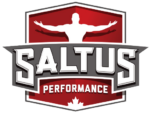
Basketball is one of the most physically demanding sports we play. The sport requires athletes to be able to complete specific skills and tasks under pressure, fatigue, and as fast as possible to be successful. To help athletes be able to do this, we first have to be able to understand the physiological characteristics required to help athletes succeed on the court.
With the advancements of technology, such as GPS and force platforms, scientific studies have been able to develop profiles of basketball athletes and define the necessary strength, power, acceleration, change of direction, and energy demands.
The findings of these research papers are highlighted in Table 1. and Figure 1., where elite basketball athletes must have the ability to absorb and generate high amounts of force through strength and power production, the ability to accelerate and decelerate as fast as possible in a straight line, and change of direction while maintaining lean body composition. Assessments and regular performance testing are not only important to improve performance but also as a method to reduce the risk of injuries and identify specific areas athletes need to address.
Table 1. Physiological Characteristics of elite basketball athletes
| Energy Demands: | ||||
| Cover 5000m + per game | 1 play lasts 12-20s | 34% of time playing (sprint/jogging) | 56% of time walking | 10% of time standing |
| Best NBA 2021 Combine Results: | ||||
| Vertical Leap | Standing Vertical | ¾ Sprint | Shuttle Run | Lane Agility |
| 48 inches | 41.5 inches | 2.98s | 2.98s | 10.45s |
| Characteristics: | ||||
| Sex | Height | Mass | 20m | CMJ |
| Female | 162-189cm | 57.9-82.6kg | 3.38-3.56s | 42.4-49.5cm |
| Male | 190cm + | 80kg + | 3.04-3.24s | 90cm + |
Figure 1. CMJ Results of NBA 2020-21: East vs West Conference (Vald Performance)
The NBA countermovement jump (CMJ) results from Vald Performance are of particular interest because of the three data points – Jump Height, Relative Concentric Peak Power, and Modified Reactive Strength Index (RSI).
The CMJ was completed on force plates, which allows us to quickly and easily assess the stability and strength of a variety of movements, that provide us with insights into our athlete’s neuromuscular performance, asymmetries, and movement strategies, meaning we are able to design and implement training programs specific to an athlete’s individualized needs.
While jump height is important, understanding how a basketball athlete generates power and what strategy they use will allow us to expose that athlete to specific training adaptations to continue their development and jump higher. Relative Concentric Peak Power is a metric that highlights how much power (force x velocity), in relation to an athlete’s body mass, they can generate. Research suggests there is a strong relationship between peak power and jump height, where athletes who have higher peak power outputs, generally have the ability to jump higher. Furthermore, the modified RSI is a specific data point that highlights an athlete’s ability to cope with stress and load while performing plyometric activities, which is extremely relevant for basketball athletes. The modified RSI calculation shows how an athlete is able to rapidly change from an eccentric motion into a concentric muscular contraction, which is key for acceleration, change of direction, and jumping.
All of the above testing parameters provide insight into the physiological demands of basketball performance. From here we are able to develop baseline measurements, assess where an athlete’s strengths and weaknesses are, then inform training program design and drive success on the court. From the research and studies, outlined above, the key performance indicators for basketball include:
- Jump Height and Power
- Modified RSI
- Strength (upper and lower body)
- Acceleration (10 & 20m times)
- Change of Direction & Agility (xxx)
- Endurance
Our performance testing incorporates all of the tests above and we’re excited to announce that on January 15th and 16th, we will run performance testing sessions for all athletes at Split Second Basketball!
